Introduction: The ‘Infrastructure’ of CNKI
As the largest and most comprehensive Chinese database in the world, China National Knowledge Infrastructure (CNKI: Zhong guo zhi shi ji chu she shi gong cheng 中国知识基础设施工程, also commonly known as Zhi wang 知网)Footnote 1 is supervised by Tsinghua University and Tonfang Knowledge Network (TKN), a high-tech enterprise funded by Tsinghua University in 1997. It is supported by the Chinese Ministry of Education, the Publicity Department of the Communist Party of China, the Ministry of Science and Technology, the State Administration of the Press, Publication, Radio, Film and Television of the People's Republic of China and the State Planning Commission of the PRC. In December 1996, CNKI began providing CD-ROM and CAJ-CD for Chinese academic journals, and it was officially launched in 1999. This repository initially focused on Chinese academic journals and later expanded its coverage to PhD dissertations, masters’ theses, conference proceedings, yearbooks, books and patent documents. It is divided into three categories: ‘databases’, ‘specialized sources’, and ‘international sources’, including ProQuest and Taylor and Francis journal databases. Ten service centres are established across the world, including Beijing, North America, Japan, Korea, Taiwan and Hong Kong; users include universities, research institutions, government think tanks, industries, hospitals and public libraries.Footnote 2 CNKI (or CIKRD) updates its information on a daily basis, and its current growth rate is approximately 350,000 new journal articles per month.
The most prominent databases of CNKI are given in Table 1, where they are listed according to the order in which they appear on the website. Each database is extensive in coverage: each of the first five databases has ten subcategories or professional fields, including Science and Engineering A, Science and Engineering B, Science and Engineering C, Agriculture, Medicine and Health, Literary, History, and Philosophy, Politics, Military and Law, Education and Social Science, Electronics Information Science and Technology, and Economy and Management. One of the most appealing characteristics of CNKI is that it allows users to access all of the databases ‘in one go’.
Table 1 Principal Databases in CNKI
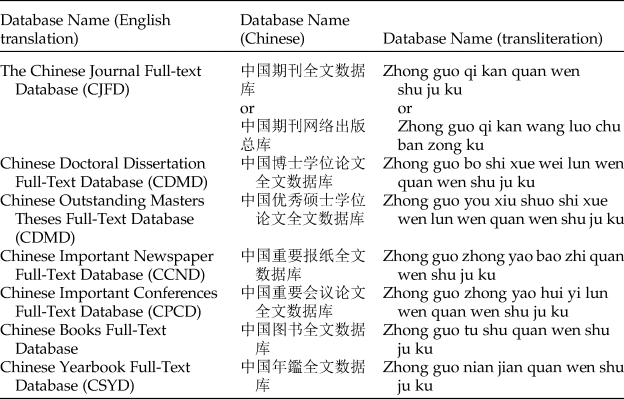
CJFD is the most important database of CNKI and has become the most useful tool for Chinese academics as well as international professionals who are engaged with Chinese studies. As of 2023 it includes more than 8,000 Chinese academic journals, among which the earliest can be traced back to 1915; nearly 57,500,000 full-text articles are included.Footnote 3 Regarding international sources, CNKI includes around 57,000 journals published by more than 650 publishers in more than 60 countries.Footnote 4 In terms of subject matter, it covers Natural Science, Engineering, Agriculture, Philosophy, Medicine, and Humanities and Social Sciences. These figures are continuously growing.
To start a search, go directly to www.cnki.net, or go to baidu.com and enter 中国知网 (cnki.net). From inside China, both routes lead to the interface seen in Figure 1. If you are outside mainland China, an overseas interface will appear. The overseas interface includes an option for choosing an English-language interface (Fig. 2), which can also be reached by going directly to http://oversea.cnki.net. Regardless of where the user is located, one can begin a search without registering (注册) or signing up (登录). If no specific type of source, such as academic journals, is selected in a search, the default sources are academic journals, theses/dissertations, conference proceedings, newspapers, books, standard (标准), and outcome (成果), as one can see in the ticked orange boxes underneath the search box in Figure 1. These default source types are slightly different if one is using an overseas interface. As can be seen in Figure 2, the default sources are academic journals, theses/dissertations, conference proceedings, newspapers, yearbooks, monographic serials, books, and standards. Note that ‘yearbooks’ and ‘monographic serials’ do not appear on the Chinese interface.
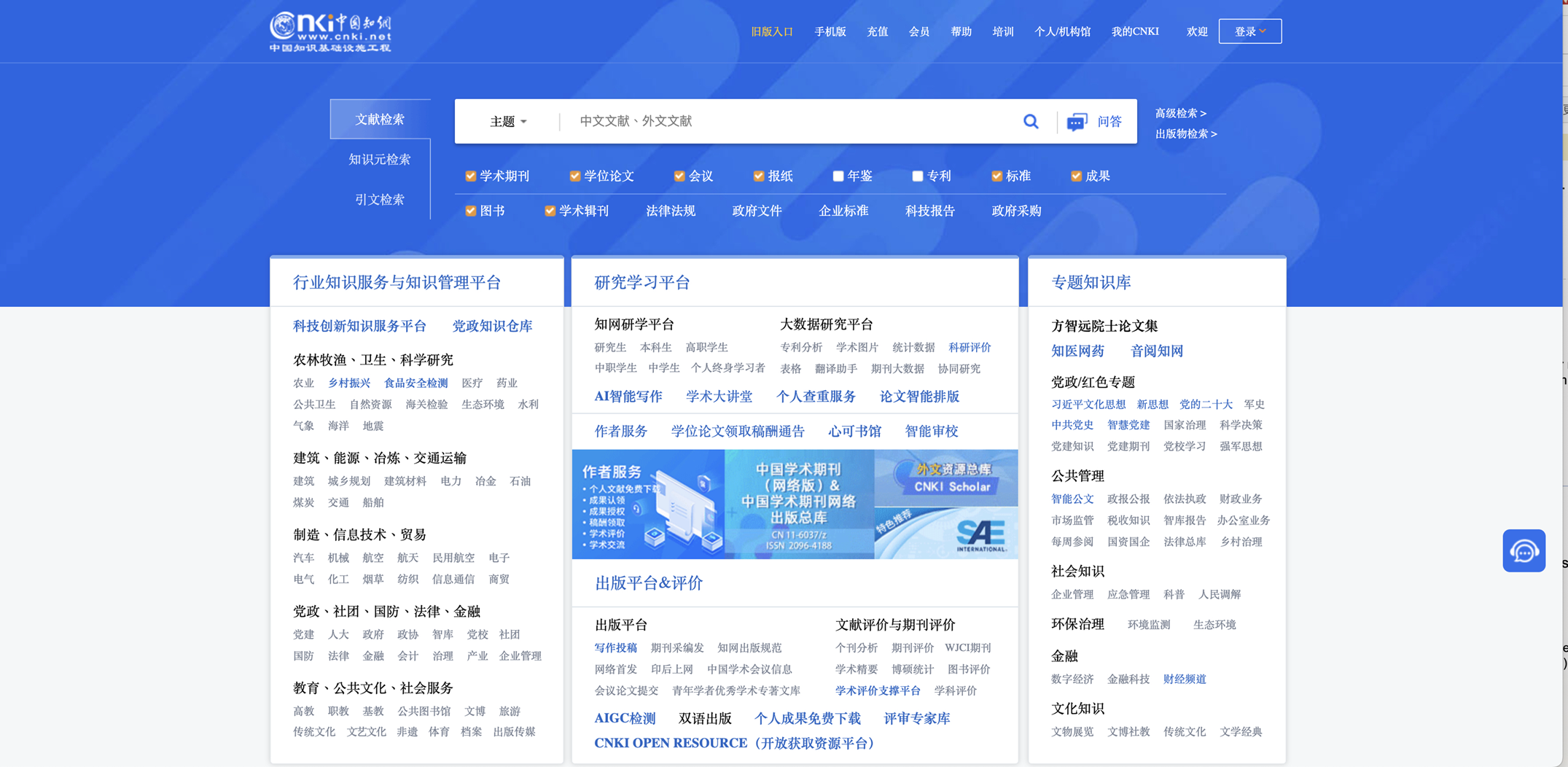
Fig. 1 Interface of CNKI (within mainland China)
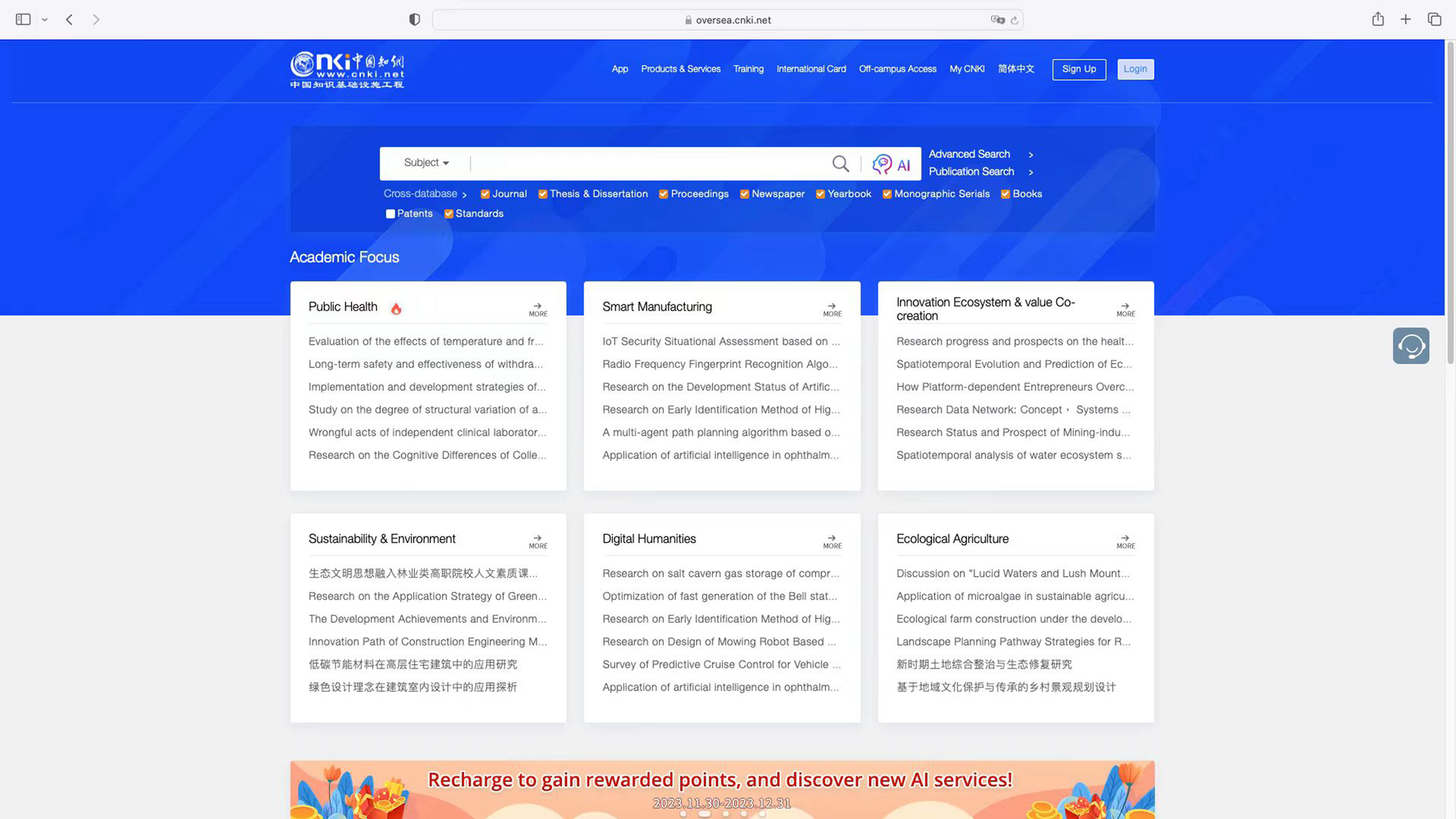
Fig. 2 English interface of CNKI (outside mainland China)
Despite the variety of source types automatically covered, most of the search results come from three main source types: academic journals, newspapers, and masters’ theses. And these are the areas where CNKI has the strongest collections. In comparison with masters’ theses, doctoral dissertations are not widely included, and this may be related to the fact that most Chinese PhD students prefer to publish their dissertations as monographs, so they are less inclined to have their doctoral dissertations publicized on CNKI. This disproportionate presence of masters’ theses in relation to doctoral dissertations may be one of the weak spots of CNKI for international users in particular.
How the Search Works
Now that we have a general picture of the ‘infrastructure’ of CNKI, let us use ‘Beethoven’ as an example to see how the search works for finding Chinese articles. English words also work for the Chinese interface, as long as they are widely used and common, such as the names of prominent composers. Entering ‘Beethoven’ in the Chinese interface yields the results seen in Figure 3.
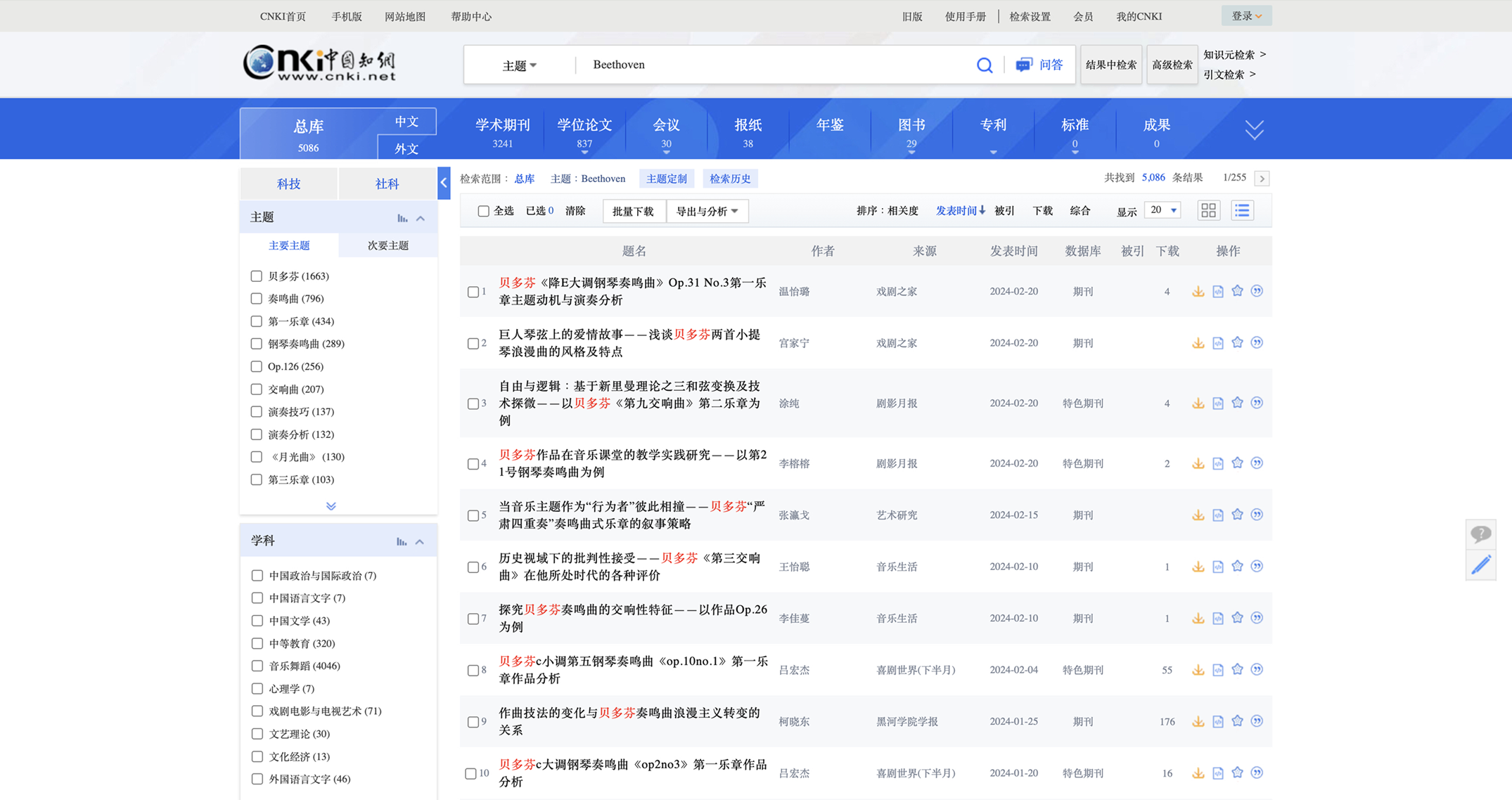
Fig. 3 Search results for ‘Beethoven’, searching for only Chinese results in the mainland Chinese interface
The top blue bar indicates the total number of results (5,086), followed by a breakdown of results in various types of sources: for example there are 3,241 in ‘学术期刊’ (‘Academic Journals’) and 30 in ‘会议’ (‘Conferences’).Footnote 5 The search results are typically arranged in reverse chronological order, starting from the most recently published. Each result listed gives the title (题名), author (作者) source (来源), publication date (发表时间), database (数据库; for source types such as newspapers or journals) and downloads (下载), indicating how many times the item has been downloaded. Items can be downloaded using the orange downward arrow icon on the far right of each entry. Downloading through a subscribing institution is free, while there is a fee for those not accessing from a subscribing institution.Footnote 6
Within mainland China, the interface is exclusively in Chinese, without the option to access the English version that is available to users overseas. To find sources in foreign languages from within mainland China, one clicks on a link, ‘外文’ (wai wen, ‘Other Languages’). This is located on the left side of the blue bar at the top of the page (immediately to the right of ‘1926’ in Fig. 4). If one switches to Chinese ‘贝多芬’ (‘Beethoven’) as the search term on the Chinese interface, the Chinese articles in the results seem largely the same as when entering ‘Beethoven’ (Fig. 5).Footnote 7 However, if we compare Figures 3 and 5, we find that the total number of articles included is different: if the user enters ‘Beethoven’ as the search word, the total results are 5,086, and if the user enters ‘贝多芬’, the number is 3,324. The difference perhaps lies in the fact that searching for ‘Beethoven’ also generates sources in other languages, while ‘贝多芬’ mainly generates Chinese sources.
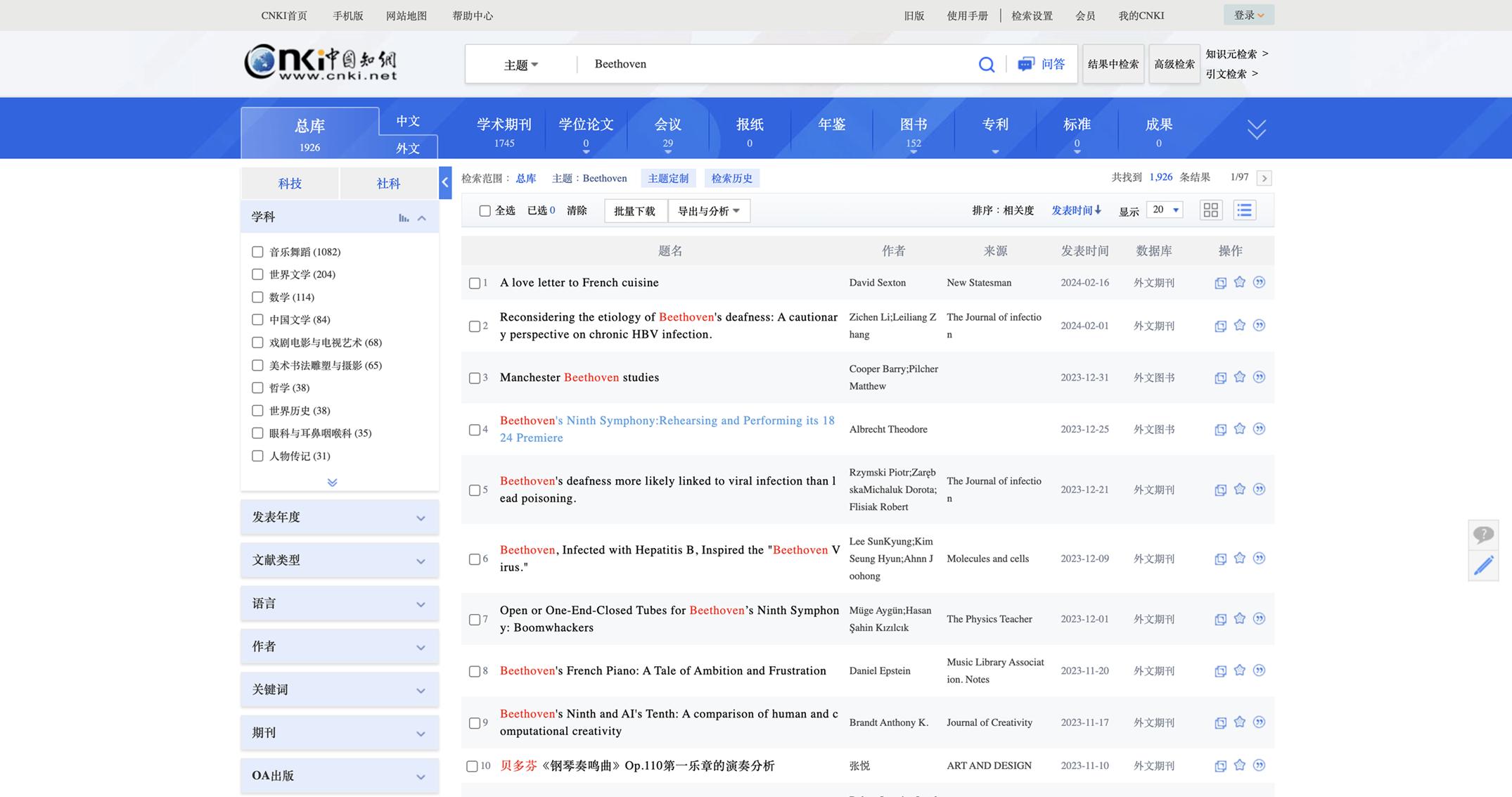
Fig. 4 Search results for western-language literature on ‘Beethoven’, using the ‘other languages (‘外文’ wai wen) in the mainland Chinese interface
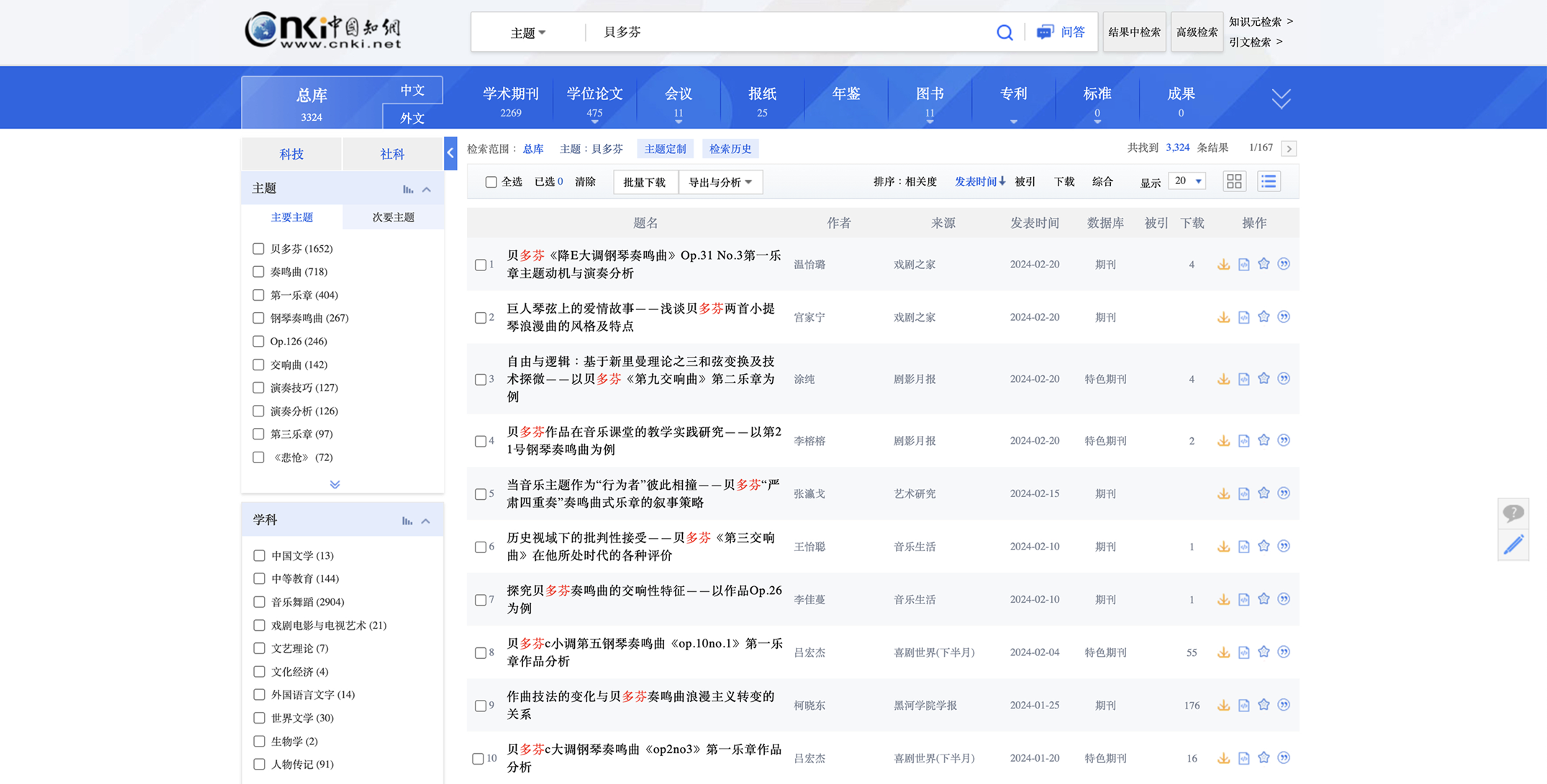
Fig. 5 Search results for ‘貝多芬’, for Chinese-language results only in the mainland Chinese interface
Now, let us try the English interface by accessing http://oversea.cnki.net. One may enter ‘Beethoven’ or ‘贝多芬’, since the search results are largely similar, although users concerned about comprehensiveness may want to experiment with multiple search terms for a given inquiry. Unlike the Chinese interface, this interface sometimes shows English titles for Chinese-language articles; for such articles, an orange box (‘Chinese Full Text’) is attached below the title (see Fig. 6). The English interface may present selected Chinese articles with English titles because their authors may have provided an English title and abstract for the article. We should note that the default mode for either ‘Beethoven’ or ‘贝多芬’ is to search for Chinese-language sources, even though we are using an English interface. To find articles related to ‘Beethoven’ published only in foreign languages, one must click on ‘Other Languages’, just as we saw on the Chinese interface (see Fig. 7).
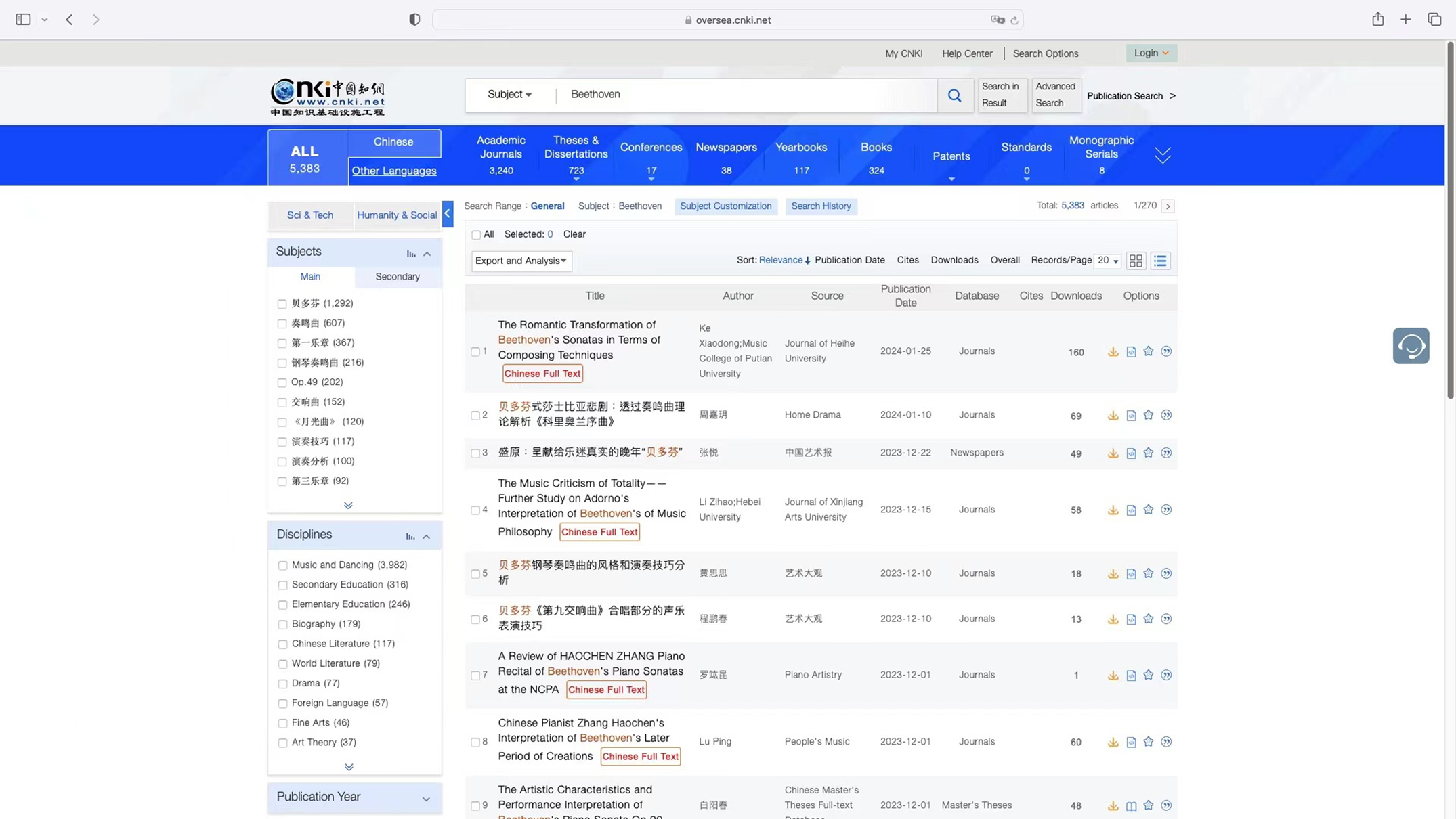
Fig. 6 Search results for ‘Beethoven’ (outside mainland China)
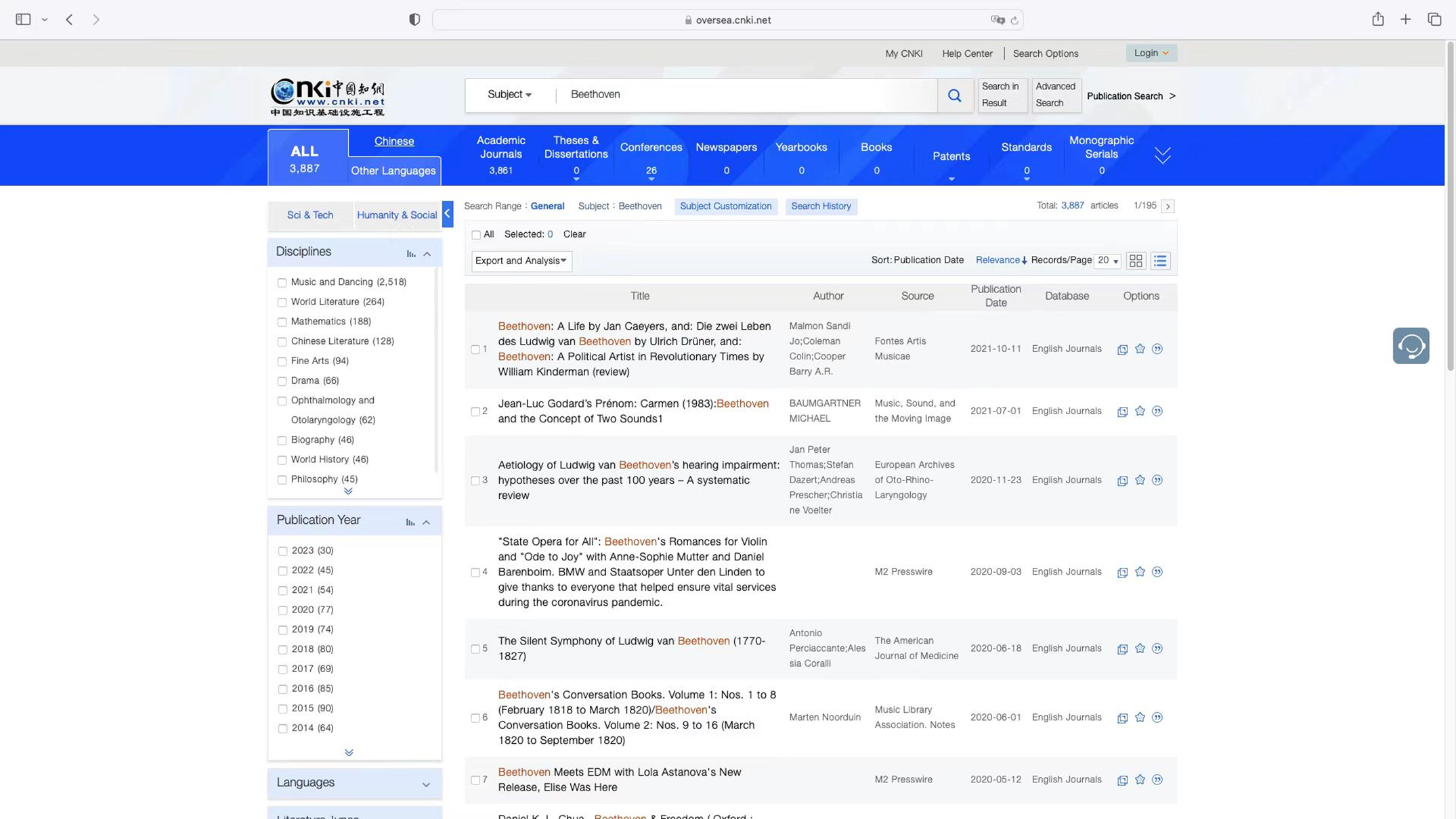
Fig. 7 Search results for ‘Beethoven’ under ‘Other Language’ (outside mainland China)
In general, for Chinese academic articles, the results are similar for search words either in English or Chinese. Meanwhile, overseas and domestic users will also get largely similar results. However, there are some differences, and it is difficult to explain them. Again, for the most comprehensive results, I would suggest trying out all of the possibilities (Chinese word, English word, domestic interface, and overseas interface).
Standard Search vs Advanced Search
CNKI provides two kinds of searches: Standard Search and Advanced Search. The previous examples have introduced the Standard Search. The advantages of more focused inquiries are obvious, so I will briefly describe how to use the Advanced Search. The link to Advanced Search in the overseas version of the website (https://oversea.cnki.net/index/) is on the upper right of the main search box (see Fig. 2), and brings the user to the page seen in Figure 8. The Advanced Search page (Fig. 8) has three search fields, each with a drop-down menu consisting of 15 parameters: Title, Keyword and Abstract, Keyword, Title, Full Text, Author, First Author, Corresponding Author, Author Affiliation, Abstract, Subhead, Reference, Chinese Library Classification, Literature Sources and DOI (the default parameters, seen in Fig. 8, are Subject, Author, and Literature Sources). Varying the criteria of these three search fields allows a user to refine the parameters to obtain highly focused results. Another feature only available in Advanced Search is the ability to limit the publication date to a particular date range.

Fig. 8 English interface for Advanced Search
International Sources
In 2008, CNKI started to establish CNKI Scholar, which includes bibliographies and abstracts from almost 1,000 journals published by prominent international publishers, including SAGE, Elsevier, Springer, Wiley, Taylor and Francis, Emerald, and Cambridge University Press. This coverage has enhanced the comprehensiveness of the CNKI service. To access search results among these international sources, consult the website http://scholar.cnki.net. The interface is similar to those shown in Figures 1 and 2, depending on the user's location (within or outside mainland China). Let us use ‘Debussy’ as an example. Entering ‘Debussy’ or ‘德彪西’ (‘Debussy’ in Chinese) as a keyword in the search box is the first step. As a second step, one can click on ‘Other Languages’ to find articles published in non-Chinese languages including English (see Fig. 9).
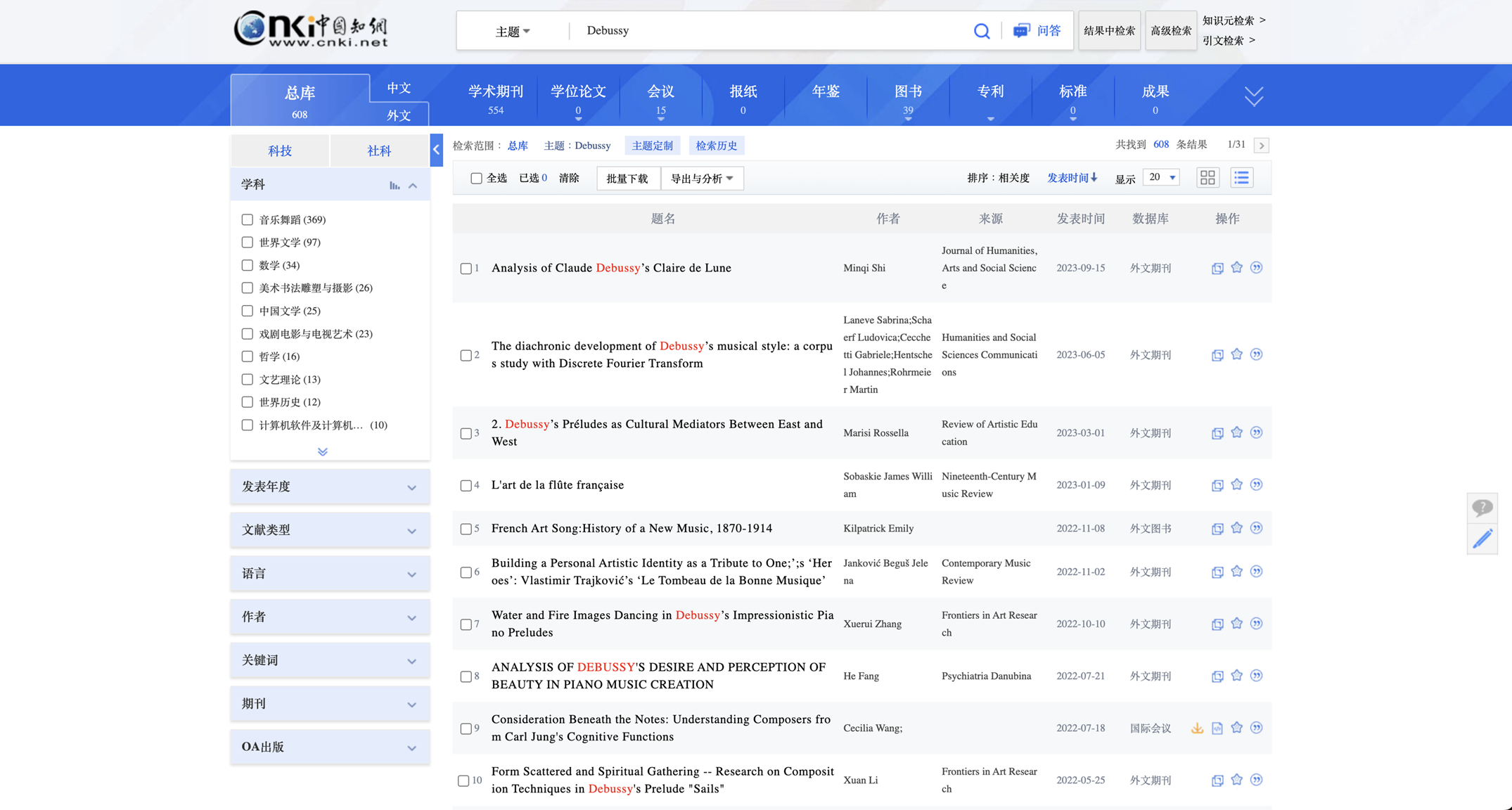
Fig. 9 Selected search results for international articles on ‘Debussy’ (within mainland China)
This two-step process (a general search followed by an ‘Other Language’ search) suggests that one has to go through a general search (either with an English keyword ‘Debussy’ or the Chinese keyword ‘德彪西’) first in order to see the option–‘Other Language’ on the interface. In the case of ‘Debussy’, even a Chinese keyword ‘德彪西’ allows us to find international articles. However, this is not the case for ‘Beethoven’ or ‘Wagner’. ‘贝多芬’ and ‘瓦格納’; the Chinese keywords for ‘Beethoven’ and ‘Wagner’, do not generate search results in any international articles (a failed search). In both cases, a user has to use ‘Beethoven’ and ‘Richard Wagner’ as the only valid search queries to find relevant studies published in foreign languages. It is difficult to explain this discrepancy; a possible explanation could be that Debussy has been an appealing topic for Chinese musicologists and critics, given that his music and critical reception has involved exoticism and Orientalism.
As we can see in Figure 9, the total number of international articles on ‘Debussy’ is around 608, as indicated in the blue bar. Unlike Chinese-language articles, those published in foreign languages cannot be downloaded. Taking the seventh article (No. 7) on the list (‘Water and Fire Images in Debussy's Impressionistic Piano Preludes’, from Frontiers in Art Research) as an example: if we click on this article, we find basic information such as its abstract (in this case, in English), keywords, journal, issue number, and DOI (see Fig. 10).
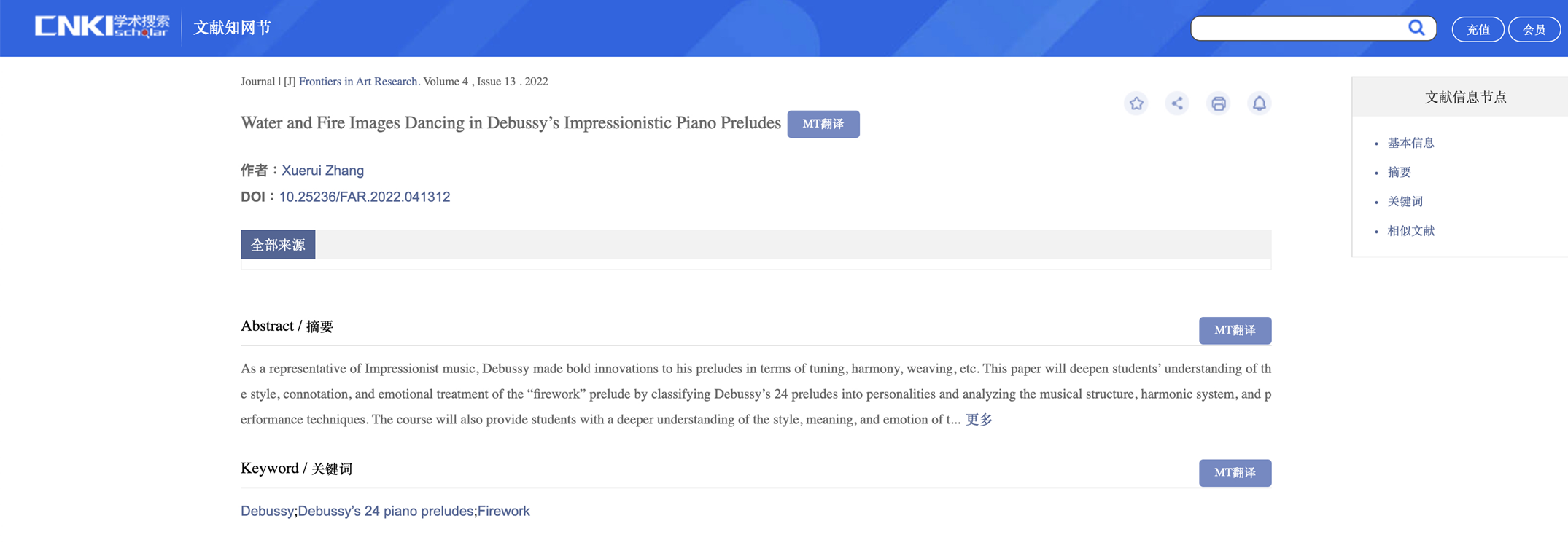
Fig. 10 Detailed record for a source published in English
At this point, I would like to alert readers to some potentially misleading information about international journals. No. 49 among the results for the Debussy search described above is published in a bilingual journal Tijdschrift van de Koninklijke Vereniging voor Nederlandse Muziekgeschiedenis (Dutch and English); no. 53, however, is published in a Spanish-language journal, Matèria: Revista Internacional d'Art. For both cases, CNKI only indicates ‘English Journals’, that is, inaccurately stating the language of the source. As mentioned above, although users cannot download full-text articles published in foreign languages from CNKI, the DOI functions as a hyperlink, leading to the journals that published the article.
Nineteenth-Century Music Studies Published in English Journals Covered by CNKI
In order to gain a better understanding about what kind of international sources CNKI includes, I will focus on studies of nineteenth-century European art music published in English-language journals. In Standard Search, if we follow the two-step process by entering ‘19th-century music’ and then clicking on ‘Foreign Languages’, 76 articles are listed. The most recently published article included is from 2021, and the oldest is from 1970.Footnote 8 Because using ‘Nineteenth-Century Music’ as the search term produces different results (8 articles), one should be mindful of possible variants of a search term.
Because ‘19th-century music’ is a vast topic (and therefore, not commonly used as a keyword), the search results from this term are diverse, including libraries and information technology, an analysis of music presses, Slovenian music, occasional music in the context of Slovenian political ideas after 1848, early nineteenth-century Black composers, African music, American music, Latin American Music, Islamic music, Venezuelan music, national music cultures in Finland, Scotland, and Croatia, Mexican traditions, a historical survey of responses to the battle of the Alamo, musical performance from Sukuma-Nyamwezi Caravans to the Swahili Coast, polyphonic settings of Speelman music in Maastricht, ballet music, church music, the theatrophone, performance studies, musical instruments, music theory, music education, psychiatry, and visual art and music, as well as composer-centred topics relating to figures such as Beethoven, Wagner and Rossini.
These articles come from various English-based journals, many of which are likely familiar to researchers in Anglophone regions: Acta Musicologica, African Music, The American Historical Review, Annual Review, Early Music, The Galpin Society Journal, International Journal of the Arts in Society, International Review of the Aesthetics and Sociology of Music, Journal of British Studies, Journal of Musicological Research, The Journal of Musicology, Journal of the Society for American Music, Latin American Music Review/, Music in Art, Music and Science, Music Theory Spectrum, Music & Letters, The Musical Times, Musicological Annual, Musicology Australia, New Scientist, Notes, Popular Music and Society, Research Studies in Music Education, The Southwestern Historical Quarterly, Studia Musicologica and Visual Arts Research. CNKI also includes some journals published in other European languages. These include bilingual or multi-lingual journals such as De musica disserenda (Slovene and English), Revue de Musicologie (French and English), Die Musikforschung (German and English), Politeja (Polish and English), Rivista internazionale di musica sacra (Italian, German, and English), Arti Musices (Croatian and English), Revue belge de Musicologie/Belgicsh Tijdschrift voor Muziekwetenschap (Belgium, German, Dutch, and English). Other than academic journals, CNKI also includes proceedings such as CEUR Workshop Proceedings (computer science workshops in Central Europe) and yearbooks such as Angermion (Yearbook for Anglo-German Literary Criticism, Intellectual History and Cultural Transfers /Jahrbuch für britisch-deutsche Kulturbeziehungen).
Given that the aesthetic concepts of ‘absolute music’ and ‘programme music’ belong to one of the most heated aesthetic debates in the nineteenth century, and there have been numerous important studies published by prominent English-language journals, we may use ‘Absolute Music’ and ‘Programme Music’ (as well as ‘Program Music’) as search queries to test the comprehensive nature of CNKI's coverage. With this search, there are 140 results for ‘Absolute Music’, 59 for ‘Program Music’, and 39 for ‘Programme Music’. Many prominent journals are including among these results, including 19th-Century Music, Austrian Studies, British Journal of Aesthetics, International Review of the Aesthetics and Sociology of Music, Journal of American Musicological Society, Journal of the Royal Musical Association, Journal of the Society for American Music, Music Theory Online, The Musial Quarterly, Nineteenth-Century Music Review, Popular Music, Studia Musicologica Academiae Scientiarum Hungaricae and Twentieth-Century Music.
In order to further assess the overall scope of the English-based academic journals CNKI includes, let us return to ‘Beethoven’ as the search query. 3,882 articles on Beethoven-related topics are included, of which 3,857 come from academic journals. Given that ‘Beethoven’ as a research topic extends across different periods and disciplines, we find other academic journals in addition to the prominent English-language journals mentioned above: Fontes Artis Musicae, Music, Sound, and Moving Images, Music Analysis, Eighteenth-Century Music, Sound Studies, Cambridge Opera Journal, Journal of Eighteenth-Century Studies, Indiana Theory Review, American Music, Journal of Music Theory, Ethnomusicology Forum, The Opera Quarterly, Theory and Practice, Intégral and College Music Symposium.
We can experiment with Advanced Search to narrow the results on Beethoven by combining ‘Beethoven’ and ‘Symphony’. This search yields 279 results. In addition to the journals we found through the previous searches for ‘19th-Century Music’, ‘Absolute Music’, ‘Program Music’ and ‘Beethoven’, this search includes articles published in Contemporary French and Francophone Studies, The International Journal of Psychoanalysis, Journal of the Musicological Society of Korea, The German Quarterly, Nineteenth-Century French Studies, The New England Quarterly, Tempo, Proceedings of the Royal Musical Association and two German-language based journals, Die Musikforschung and Archiv für Musikwissenschaft. After experimenting with these searches, one has the sense that CNKI has a broad coverage of prominent English-language journals.
Researchers also can use Author and Subject as parameters in conducting an Advanced Search. For example, ‘Lydia Goehr’, ‘Music’ and then ‘Other Language’, yields 11 journal articles, ranging from 1999 to 2015. These articles come from The British Journal of Aesthetics, The Journals of Esthetics and Art Criticism, New German Critique, Notes, Musicae Scientiae, Journal of the American Musicological Society, Nangman Quarterly and German Studies Review. Given that CNKI's strongest coverage is in journals, Goehr's publications outside journals are not included. The same situation applies to ‘Jim Samson’. Entering ‘Jim Samson’, ‘Music’, and ‘Other Language’ results in 13 journal articles. Apparently, Goehr's and Samson's publications outside academic journals are not included; this again suggests that CNKI's strongest collection is academic journals and that one of its weak spots is in monographs and other books. Another observation about the search example of ‘Jim Samson’ is that users can also enter parameters (in English) to find Chinese articles that involve Jim Samson's work.
Nineteenth-Century Music Studies in the Musicological Community in China
To conclude this exploration of CNKI, I will attempt to summarize what CNKI reveals about the position of nineteenth-century music in Chinese musicology. Although there are numerous music journals in China, their quality and standards vary. I will therefore focus on the music journals that have been singled out for their excellence in the CSSCI system, certified by the Nanjing University, Institute for Chinese Sciences Research and Assessment. Academic journals that belong to the CSSCI system are called C journals (C 刊); these are the ‘core’ journals recognized by most academic communities in China. In the area of music, there are five C musical journals: Yin yue yan jiu 音乐研究 (Music Research), supervised by People's Music Publisher, Zhong yang yin yue xue yuan xue bao 中央音乐学院学报 (Journal of the Central Conservatory of Music), supervised by the Central Conservatory of Music, Zhong guo yin yue xue 中国音乐学 (Musicology in China), supervised by Chinese National Academy of Art, Zhong guo yin yue 中国音乐 (Chinese Music), supervised by the China Conservatory of Music, and Yin yue yi shu 音乐艺术 (Art Music), supervised by the Shanghai Conservatory of Music. Of the five journals, Yin yue yan jiu, Zhong yang yin yue xue yuan xue bao and Yin yue yi shu include a relatively large proportion of articles devoted to Western art music.
In order to test a more focused and meaningful search, I will consider only articles published in these three C (core) music journals in the past five years (January 2019 to January 2024). Given that Beethoven-related topics have been widely studied by Chinese scholars, I used the Advanced Search and entered ‘贝多芬’ (Beethoven) as the search query. The results include three articles in Yin yue yan jiu, six in Yin yue yi shu, and three in the Zhong yang yin yue xue yuan xue bao. Taken together, these 12 articles published during the past five years reveal that research perspectives on Beethoven are diverse: they include aesthetics, reception, analysis, performance issues and narrativity. The book review (of Maynard Solomon's Late Beethoven: Music, Thought, Imagination) and the translated article (Daniel Chua's ‘Beethoven Going Blank’) also show that Chinese musicologists are aware of research conducted in the West, despite a certain time lag.
CNKI, with its strong coverage of academic journals, is a useful tool for both Chinese and international musicologists. Its comprehensiveness and efficiency in updating its references allow the researcher to have a thorough grasp on sources in China. The updating frequency for international sources is not as high as for Chinese journals; however, the delay is usually only a few years. Although the articles in foreign languages are not downloadable, CNKI consistently provides abstracts, article sources, and DOIs. This information offers researchers a general sense of the aims and argument of a source and a pathway to the original journals through DOIs, making it possible to obtain full-text articles in conjunction with other databases.
If one is interested in finding sources on Chinese music in the nineteenth-century, I recommend using Chinese characters in the search. The nineteenth century in China corresponds to the end of the Qing Dynasty, usually called ‘晚清’; as a whole, the Qing Dynasty, or 清朝or清代, extends from 1636 to 1912. The best phrase to narrow down this wide temporal frame (compared to Western periodization schemes) is ‘晚清音乐’ (‘Music in the Late Qing Dynasty’), which results in 37 items related to Chinese music and musical practices in the nineteenth century. There are no foreign sources in the results for this search. Among the results, the topics include music pedagogy, the influence of Western Romanticism, the development of Chinese dramatic genres, music depicted in literary sources, Christian music, music historiography, iconography and visual culture, journalism, the influence of Japanese music, musical activities in the French concession in Shanghai, female music circles, the reception of Western music, cross-cultural interactions between the West and China, music history in travelogues, and school songs. Taken together, these results are quite diverse and offer a meaningful point of entry into Chinese musical culture in the nineteenth century for international scholars.
While I was preparing this review, CNKI added two new functions to the international interface: the first, Publication Search, is available underneath the Advanced Search option; the second is an AI function indicated by an icon in the search box (see Fig. 2 above). The publication function for now only applies to Chinese academic journals, and one hopes that international journals will be included in the near future. The AI function does not yet seem operative; the ways in which it will transform the functionality of CNKI remain to be seen.













